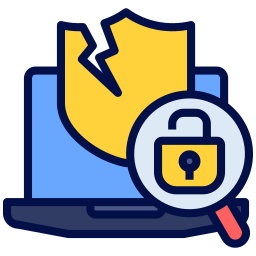
Arizona State University Company Cyber Security Posture
asu.eduASU has developed a new model for the American research university, creating an institution committed to excellence, access and impact — the New American University. Nationally and internationally acclaimed, ASU ranks among the very best in nearly every critical measurement of student success, outcomes of groundbreaking research and impact in the communities it serves. ASU is among the top 1% of universities in the world, has been repeatedly ranked No. 1 in multiple categories and is currently ranked No. 2 in the U.S. for employability among public universities. ASU is home to a vibrant, thriving global network of alumni — leaders, doers, shapers and learners, and serves graduate and undergraduate students across four Phoenix Metropolitan area campuses, online and throughout the U.S., including locations in California, Hawai‘i and Washington, D.C. Follow our page for the latest stories and updates from ASU.
ASU Company Details
arizona-state-university
29191 employees
946999.0
611
Higher Education
asu.edu
Scan still pending
ARI_2569197
In-progress
Between 800 and 900
This score is AI-generated and less favored by cyber insurers, who prefer the TPRM score.
 ASU Global Score
ASU Global Score.png)

Arizona State University Company Scoring based on AI Models
| Model Name | Date | Description | Current Score Difference | Score |
|---|---|---|---|---|
| AVERAGE-Industry | 03-12-2025 | This score represents the average cybersecurity rating of companies already scanned within the same industry. It provides a benchmark to compare an individual company's security posture against its industry peers. | N/A | Between 800 and 900 |
Arizona State University Company Cyber Security News & History
| Entity | Type | Severity | Impact | Seen | Url ID | Details | View |
|---|---|---|---|---|---|---|---|
| Arizona State University | Breach | 25 | 2 | 08/2019 | ARI03710423 | Link | |
Rankiteo Explanation : Attack limited on finance or reputationDescription: Arizona State University inadvertently exposed the email addresses of 1000 students in what is considered a breach of federal health privacy law. The university notified 4,000 students on August 2019 that their email addresses were accidentally revealed. In the breach, an ASU office sent bulk emails about health insurance renewal to students without masking the identity of recipients. The unintended action was a breach of the Health Insurance Portability and Accountability Act. No protected health information was released aside from the student email addresses, the organization stated. | |||||||
Arizona State University Company Subsidiaries

ASU has developed a new model for the American research university, creating an institution committed to excellence, access and impact — the New American University. Nationally and internationally acclaimed, ASU ranks among the very best in nearly every critical measurement of student success, outcomes of groundbreaking research and impact in the communities it serves. ASU is among the top 1% of universities in the world, has been repeatedly ranked No. 1 in multiple categories and is currently ranked No. 2 in the U.S. for employability among public universities. ASU is home to a vibrant, thriving global network of alumni — leaders, doers, shapers and learners, and serves graduate and undergraduate students across four Phoenix Metropolitan area campuses, online and throughout the U.S., including locations in California, Hawai‘i and Washington, D.C. Follow our page for the latest stories and updates from ASU.
Access Data Using Our API

Get company history
.png)
ASU Cyber Security News
ASU’s coding camp plants seeds of STEM in middle schoolers
From AI-powered games to cybersecurity challenges, young coders explored tech in action at a one-day ASU camp designed to spark curiosity ...
Learn to HACK for FREE with pwn.college by Arizona State University
In martial arts terms, it is designed to take a “white belt” in cybersecurity through the journey to becoming a “blue belt”, able to approach ( ...
Lester Godsey joins ASU as chief information security officer
With a career spanning nearly three decades of professional IT experience, Lester Godsey is back where he first started — serving the ...
ASU cybercrime-fighter helps us compute with confidence: Q&A with Adam Doupé
Adam Doupé has always been interested in how computers work. When he was in high school, he read an online post about how to spoof email ...
Meet 3 ASU cybersecurity researchers advancing a more secure future
Cybersecurity isn't just about fighting the bad guys through your devices.It is a field of study that, for example, can ensure autonomous ...
Hack like you 'meme' it
On pwn.college, students from 145 countries complete learning modules and then engage in online Capture the Flag exercises. Capture the Flag ...
ASU professor honored with prestigious award for being a cybersecurity trailblazer
Ahn is a professor of computer science and engineering in the School of Computing and Augmented Intelligence, part of the Ira A. Fulton Schools ...
DEF CON Academy looks to serve, build community
Created by Shoshitaishvili, pwn.college is a blend of educational modules, competitive practice environments and communication channels to help ...
Keys, clues and crypto: How ASU researchers are building smarter tech
A team of researchers who are devising ways to track and protect payments made via cryptocurrency. The team seeks to bolster law enforcement efforts to stop ...

ASU Similar Companies

University of Cincinnati
The University of Cincinnati, top 5 university for co-op, offers students a balance of educational excellence and real-world experience. Since its founding in 1819, UC has been the source of many discoveries creating positive change for society, including the first antihistamine, the first co-op edu

University of Pittsburgh
The University of Pittsburgh is a top-ranked, public institution in Pennsylvania and a member of the Association of American Universities of leading research universities. With our discoveries, we are recognized as one of the most innovative universities in the world. We invent the paths of the futu

University of Oxford
Ranked number one in the world in the 2023 Times Higher Education World Rankings, we are at the forefront of the full range of academic disciplines, including medical sciences; mathematical, physical and life sciences; humanities; and social sciences. As the oldest university in the English-speaking

University of Minnesota
One of the nation’s largest schools, the University of Minnesota offers baccalaureate, master’s, and doctoral degrees in virtually every field—from medicine to business, law to liberal arts, and science and engineering to architecture. The University of Minnesota system is made up of five campuses

Georgia State University
Georgia State is an urban public research university and national model for student success in Atlanta, the cultural and economic center of the Southeast. The largest university in the state and one of the largest in the nation, Georgia State provides its faculty and more than 51,000 students with u

The Johns Hopkins University
We are America’s first research university, founded in 1876 on the principle that by pursuing big ideas and sharing what we learn, we can make the world a better place. For more than 140 years, our faculty and students have worked side by side in pursuit of discoveries that improve lives. Johns Hop

Frequently Asked Questions
Explore insights on cybersecurity incidents, risk posture, and Rankiteo's assessments.
ASU CyberSecurity History Information
How many cyber incidents has ASU faced?
Total Incidents: According to Rankiteo, ASU has faced 1 incident in the past.
What types of cybersecurity incidents have occurred at ASU?
Incident Types: The types of cybersecurity incidents that have occurred incident Breach.
Incident Details
Can you provide details on each incident?

Incident : Data Breach
Title: Arizona State University Email Address Exposure
Description: Arizona State University inadvertently exposed the email addresses of 1000 students in what is considered a breach of federal health privacy law.
Date Detected: August 2019
Date Publicly Disclosed: August 2019
Type: Data Breach
Attack Vector: Email
Vulnerability Exploited: Improper Email Handling
What are the most common types of attacks the company has faced?
Common Attack Types: The most common types of attacks the company has faced is Breach.
Impact of the Incidents
What was the impact of each incident?

Incident : Data Breach ARI03710423
Data Compromised: Email Addresses
What types of data are most commonly compromised in incidents?
Commonly Compromised Data Types: The types of data most commonly compromised in incidents are Email Addresses.
Which entities were affected by each incident?

Incident : Data Breach ARI03710423
Entity Type: Educational Institution
Industry: Education
Location: Arizona, USA
Customers Affected: 1000
Data Breach Information
What type of data was compromised in each breach?

Incident : Data Breach ARI03710423
Type of Data Compromised: Email Addresses
Number of Records Exposed: 1000
Sensitivity of Data: Low
Regulatory Compliance
Were there any regulatory violations and fines imposed for each incident?

Incident : Data Breach ARI03710423
Regulations Violated: Health Insurance Portability and Accountability Act (HIPAA)
Additional Questions
Incident Details
What was the most recent incident detected?
Most Recent Incident Detected: The most recent incident detected was on August 2019.
What was the most recent incident publicly disclosed?
Most Recent Incident Publicly Disclosed: The most recent incident publicly disclosed was on August 2019.
Impact of the Incidents
What was the most significant data compromised in an incident?
Most Significant Data Compromised: The most significant data compromised in an incident was Email Addresses.
Data Breach Information
What was the most sensitive data compromised in a breach?
Most Sensitive Data Compromised: The most sensitive data compromised in a breach was Email Addresses.
What was the number of records exposed in the most significant breach?
Number of Records Exposed in Most Significant Breach: The number of records exposed in the most significant breach was 100.0.
What Do We Measure?
















Every week, Rankiteo analyzes billions of signals to give organizations a sharper, faster view of emerging risks. With deeper, more actionable intelligence at their fingertips, security teams can outpace threat actors, respond instantly to Zero-Day attacks, and dramatically shrink their risk exposure window.
These are some of the factors we use to calculate the overall score:
Identify exposed access points, detect misconfigured SSL certificates, and uncover vulnerabilities across the network infrastructure.
Gain visibility into the software components used within an organization to detect vulnerabilities, manage risk, and ensure supply chain security.
Monitor and manage all IT assets and their configurations to ensure accurate, real-time visibility across the company's technology environment.
Leverage real-time insights on active threats, malware campaigns, and emerging vulnerabilities to proactively defend against evolving cyberattacks.




